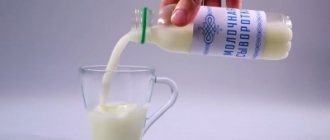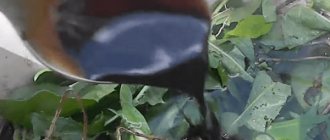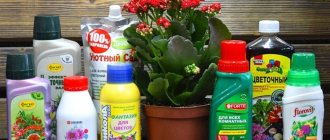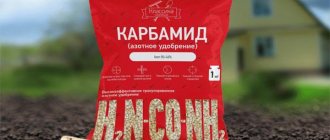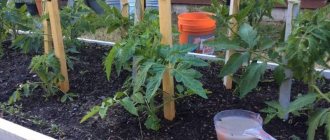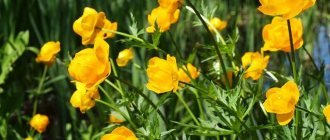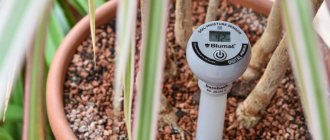What do you feed with yeast? Almost all garden, vegetable and flower crops. After all, the mass intended for baking contains a large range of useful substances, minerals and vitamins.
Any plants need fertilizing with mineral or organic fertilizers. One of the most useful and nutritious supplements is yeast, rich in Saccharomyces fungi. This “live” fertilizer is absolutely safe for humans and plants and helps to obtain a rich and healthy harvest.
What are the benefits of yeast
The fungi that make up yeast accelerate the decomposition of organic compounds, have a beneficial effect on soil microflora and protect plants from diseases and pests. Yeast contains proteins, carbohydrates, trace elements, minerals and B vitamins necessary for plant growth and development. This increases the seedlings’ chances of survival even in low light conditions. When dissolved in water, yeast forms compounds that accelerate the formation of the root system, and also transfers to the plant the vitamins necessary for its development and recovery.
Beginner gardeners often wonder whether it is possible to feed garden crops with yeast? Yes, they can be used to feed almost all plants:
- indoor and garden flowers,
- garden and vegetable crops,
- ornamental and berry bushes, etc.
The only exceptions are potatoes, garlic and onions.
Yeasts are resilient organisms and, unlike other fertilizers, they are not immediately washed away during precipitation. Fungi also easily tolerate high and low temperatures, pressing and crushing. The only serious enemy of these microorganisms is aggressive bacteria, which can suppress their development.
Answers to frequently asked questions
What yeast can I use?
Any will do. Both dry and fresh are equally effective. It is only important that they do not expire.
How many times should I feed the seedlings?
No more than two. There is no more benefit. Yeast feeding is not a complete fertilizer. Fungi only release nitrogen and phosphorus from the soil.
What plants love such fertilizers?
Almost all vegetables, many flowers, strawberries, trees. Tomatoes, peppers and cucumbers respond especially well. But onions, garlic and potatoes do not favor this fertilizer.
What can replace yeast with?
EM preparations have a similar effect on plants. For example, Baikal-Em, Bokashi, Emochka, Gumat-Em, etc.
Which yeast is better?
Dry yeast is simply more profitable, since less of it is required to prepare the working solution.
How to feed seedlings with yeast
Feeding seedlings with yeast has a beneficial effect on the development of plants, accelerating their growing season and improving the development of the root system.
You can feed seedlings with yeast using one of the following recipes:
- Dilute 200 g of baker's yeast in 1 liter of warm water and let it brew for several hours. Then dilute the resulting composition with 10 liters of water and water the seedlings evenly;
- Take a 100 gram briquette of fresh yeast and dilute it in 10 liters of warm water. Let it sit for a day and then water the seedlings. This “live” composition works especially well on pepper seedlings;
- Dilute 10 g of granulated yeast in 10 liters of warm water and add 2 tbsp. Sahara. Let it brew for 2-3 hours, then dilute the composition with water in a ratio of 1:5.
Yeast feeding - as a fertilizer for plants
Yeasts are the simplest single-celled fungi. Their composition itself lacks nitrogen, phosphorus, potassium, that is, those important microelements necessary for normal plant growth. But once in the soil, they begin to affect the organic residues that are in the ground. They begin to process them, thereby decomposing these residues faster and better. When decomposed, they release large quantities of nitrogen and phosphorus into the soil.
Plants accordingly absorb the increased content of these elements and actively develop. Nitrogen helps build up vegetative mass, and phosphorus promotes better development of the root system. Here is the effect of their use. That is why such fertilizer is considered a growth stimulator. And it’s not for nothing that the following expression appeared: “It’s growing by leaps and bounds.”
How to feed tomatoes with yeast
Tomato, like no other crop, “loves” feeding with fresh yeast. However, not all gardeners know how to properly feed small bushes of young tomatoes in open ground with yeast:
- Feed the tomatoes with yeast for the first time To do this, dilute 100 g of dry yeast in 10 liters of water at a temperature of 25-30°C. Add 2 tbsp to them. sugar to activate yeast growth. After 2 hours, the starter will be ready and needs to be diluted with 50 liters of water. Apply at least 0.5 liters of the composition per bush;
- Fertilize the second time Increase the dosage to 1 l;
- Apply the same fertilizer a third time Increase the consumption rate to 2 liters per bush.
Not everyone also knows how to feed tomatoes with yeast in a greenhouse. It is necessary to carry out two feedings: the first - after rooting of seedlings, and the second - before flowering begins.
The recipe for preparing the mixture in both cases is identical: dilute 10 g of dry yeast in 10 liters of water, add 0.5 liters of wood ash, 0.5 liters of chicken manure extract (infused for 3 days in a ratio of 1:10 with water) and 5 tbsp. . Sahara. After a few hours, dilute the already obtained infusion with water in a ratio of 1:10 and pour it over the bushes around the circumference at the rate of 0.5-2 liters per plant. It is best to water from a watering can with a strainer at some distance from the shoots so as not to damage the root system.
The most convenient way to fertilize tomatoes is with a watering can - this way you can protect the root system from damage
Additional tips and tricks
Regardless of whether the plants are in a greenhouse or open ground, prompts from the crops will be signs of urgent feeding with yeast fertilizers:
- the appearance of signs of disease;
- falling and wilting of foliage;
- slow and complete absence of flowering;
- underdeveloped green parts (stem, leaves);
- the stem becomes thinner and becomes soft.
With one recipe that will strengthen the plant for 40-60 days, the gardener will restore the crop’s immune system and provide protection from pests.
But experienced gardeners argue that it is better to use a different remedy for vines and flowering plants during flowering. Reason: honey plants don't really like the smell of yeast, which will scare them away.
It is also dangerous to store the working solution for more than 2 days. Ingredients that ferment for more time become useless.
How to feed cucumbers with yeast
Yeast fertilizers should not be overused, since they deplete the soil, “pulling” potassium from it and oversaturating the soil with nitrogen. Therefore, sometimes it is recommended to “quench” yeast with wood ash.
The simplest mixture can be prepared as follows: fill a 10-liter bucket 2/3 full with black bread, add water to the brim, cover with a lid and put pressure on top (for example, several bricks), place in a warm place for 7 days. Before watering, dilute the resulting starter with water in a ratio of 1:3 and water the bushes at the rate of 0.5 liters of composition per plant. Carry out this feeding no more than once every 2 weeks and no more than 5 times per season.
Flaws
When using yeast to feed plants, you need to know the features of their action in specific conditions:
- yeast actively reproduces only in a warm environment, therefore, when added to unheated soil, it does not give the expected effect;
- yeast is added to soil pre-treated with organic matter. There will be no result in depleted soil;
- When feeding, it is important to follow the recommended dosages. Overfeeding leads to a rapid increase in green mass, slowing down the formation of ovaries.
How to feed peppers and eggplants with yeast
Recipes for feeding seedlings of peppers and eggplants do not differ from those described above. But fertilizer for open ground vegetables varies somewhat in composition. For them, first of all, you can prepare a “herbal cocktail”. Prepare 1 bucket of herbs (plantain, hops, nettle, etc.), add 0.5 kg of bread or crackers and 0.5 kg of baker's yeast. Pour the ingredients into 50 liters of water and let the contents brew for two days.
A good starter is prepared from 100 g of live yeast, 50-70 g of sugar, 0.5 liters of ash and 0.5 liters of chicken manure extract. Dilute all this with 10 liters of water and apply at least 2 liters of concentrate under each plant.
Sometimes, instead of sugar, you can add raisins and other dried fruits to the starter.
How to feed cabbage with yeast
Cabbage in open ground is fed in the following order: first, a month after planting the seedlings, the first feeding is carried out, and after 20 days - another one.
Use the following composition: take 12 g of dry yeast, pour it into a 3-liter jar, add 100 g of granulated sugar and fill with warm water. The mixture should sit for 7-8 days. Upon completion of fermentation, dissolve every 250 ml of the resulting infusion in 10 liters of water and pour over the cabbage.
Before adding yeast fertilizing, the cabbage should be watered with clean water.
Common mistakes
- Using old yeast solution. The infusion must be used on the day of preparation, otherwise it loses its properties.
- Using expired yeast. A low-quality product will not bring any benefit, but can harm the plants.
- Watering with a working solution of dry soil. For fertilizing to be successful, the soil under the seedlings must first be slightly moistened.
- Watering with concentrate. Excess yeast will lead to fattening of seedlings.
- Frequent use of the drug. This can be corrected with the help of ordinary wood ash, which must be dissolved in water and watered with this solution on the soil under the seedlings.
How to feed strawberries with yeast
Impressive strawberry yields are achieved using yeast fertilizers, which must be applied at least three times per season:
- during the budding period,
- at the beginning of fruiting,
- after the end of fruiting.
Take a pack of yeast weighing 100 g and dilute it with 5 liters of water. After fermentation (during the day), dilute every 0.5 liters of infusion with 10 liters of water. Apply 0.5 liters of the mixture under each strawberry bush.
Yeast creates favorable conditions for strawberry growth
Reviews from gardeners about using yeast for fertilizer
Inga, 24 years old, Riga. I recently listened to a radio program about growing strawberries. The agronomist advised watering the bushes at the root with a yeast solution as a preventive measure against gray rot. I’ll try this year, since we have problems with this particular disease.
Elena, 37 years old, Krasnoyarsk. I tried to water indoor plants with yeast solution as an experiment. I won’t say that Hippeastrum grew much upward, but the plant became strong. There was no yeast smell from the soil.
Yeast feeding of seedlings is an effective means for increasing plant productivity and preventing various diseases. The solution for watering and spraying is easy to prepare; the main thing is not to overdo it with the amount of fertilizing, and do not forget to apply other fertilizers on time.
How to feed flowers with yeast
If fertilizers are applied to garden crops, among other things, to improve fruiting, flowers need them mainly to stimulate growth. A distinctive feature of yeast fertilizers for flowers is that everything that is at hand can act as components: leftover bread, crackers, other flour products, potato tops, hops. It is enough to take 200-250 g of such biological additives and fill them with 1 liter of water. Then the composition should sit for 1 hour and it can be diluted in a ratio of 1:9 with plain water and watered the plants.
This mixture is also good for flowers: add 10 g of dry yeast, 2 tbsp. sugar, 2 g of ascorbic acid and fill it all with 10 liters of water. Let the mixture sit for several hours and water your indoor and garden flowers with it.
To feed garden flowers, you can add grass to the yeast mixture.
Yeast for plants - properties, benefits, harm
We are accustomed to applying various fertilizers to plants, including mineral ones, and when we hear about the use of hydrogen peroxide or yeast solution, we doubt whether there will be any harm? Let's try to figure it out.
Let's start with a definition - what is yeast? According to Wikipedia, yeasts are single-celled fungi that live in areas rich in organic compounds. If you think about it, our beds are just such a place - there are plant remains and waste products of insects and worms. In theory, you can apply yeast to plants and trees, if you only know why.
It has been established that yeast has a complex of positive effects on various plants:
- stimulate the growth and strengthening of roots;
- increase resistance to various diseases;
- strengthen seedlings even in poor lighting conditions;
- stimulate the activity of bacteria, including those that contribute to an increase in nitrogen in the soil;
- improve soil composition.
To clarify, yeast infusions are not a supplement, but growth stimulants. Therefore, it is advisable to use them when growing seedlings, including in greenhouses.
It is important to remember that if used incorrectly, such solutions can be harmful.
The fact is that during the life of yeast, potassium and calcium, which are also necessary for plants, are destroyed. Therefore, in some cases, such fertilizers are used in combination with wood ash.
Yeast for rooting cuttings
The yeast solution for rooting cuttings is prepared according to the standard recipe (10 g of dry yeast per 1 liter of water). The cuttings are soaked in it for a day, then they are taken out, washed and placed in a container with clean water. After some time, roots appear at the site of the thickening at the base. This way you can root cuttings of roses, ornamental and berry bushes.
So, you have learned how to feed plants with yeast. This simple but very effective remedy stimulates their growth, slows down the development of diseases and develops the root system. Try to “treat” your plantings with a yeast “delicacy” and you will not regret it.
Methods for introducing yeast nutrition
It is important to decide what yeast feeding is needed for, and depending on this, use the root or foliar method of application. Root feeding should not be applied more than twice during the entire growing season. Foliar feeding is recommended only once, but some gardeners use weak solutions once every two weeks.
Root feeding
Root feeding with yeast is carried out with the aim of quickly increasing the biomass of the plant. It promotes faster restoration of the root system when planting seedlings in the ground, increases the immunity of plants and their resistance to various diseases. The second feeding is designed to speed up the appearance of ovaries.
In a greenhouse, root feeding is carried out in the morning so that by evening the moisture is absorbed into the ground and does not contribute to the formation of rot. In open ground, on the contrary, plants are fertilized in the evening or on a cloudy day so that moisture is not absorbed too quickly.
Foliar feeding
Foliar spraying is carried out to prevent plant diseases. It is especially effective against powdery mildew and late blight. It is best to spray in the evening to avoid burning the plant. Also, foliar feeding can be used to strengthen weak, newly planted seedlings.
